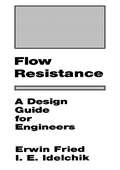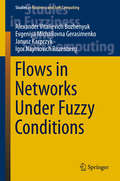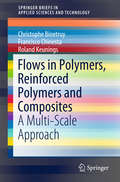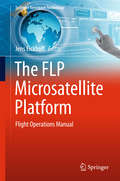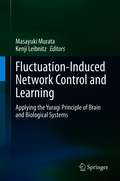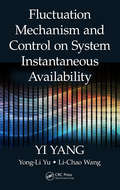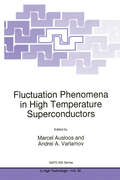- Table View
- List View
Flow Past Highly Compliant Boundaries and in Collapsible Tubes: Proceedings of the IUTAM Symposium held at the University of Warwick, United Kingdom, 26–30 March 2001 (Fluid Mechanics and Its Applications #72)
by Peter W. Carpenter Timothy J. PedleyThe IUTAM Symposium on Flow in Collapsible Tubes and Past Other Highly Compliant Boundaries was held on 26-30 March, 2001, at the University of Warwick. As this was the first scientific meeting of its kind we considered it important to mark the occasion by producing a book. Accordingly, at the end of the Symposium the Scientific Committee met to discuss the most appropriate format for the book. We wished to avoid the format of the conventional conference book consisting of a large number of short articles of varying quality. It was agreed that instead we should produce a limited number of rigorously refereed and edited articles by selected participants who would aim to sum up the state of the art in their particular research area. The outcome is the present book. Peter W. Ca rpenter, Warwick Timothy J. Pedley, Cambridge May, 2002. VB SCIENTIFIC COMMITTEE Co-Chair: P.W. Carpenter, Engineering, Warwiek, UK Co-Chair: TJ. Pedley, DAMTP, Cambridge, UK V.V. Babenko, Hydromechanics, Kiev, Ukraine R. Bannasch, Bionik & Evolutionstechnik, TU Berlin, Germany C.D. Bertram, Biomedical Engineering, New South Wales, Australia M. Gad-el-Hak, Aerospace & Mechanical Engineering, Notre Dame, USA J.B. Grotberg, Biomedical Engineering, Michigan, USA. R.D. Kamm, Mechanical Engineering, MIT, USA Y. Matsuzaki, Aerospace Engineering, N agoya, Japan P.K. Sen, Applied Mechanics, IIT Delhi, India L. van Wijngaarden, Twente, Netherlands K-S. Yeo, Mechanical Engineering, NU Singapore.
Flow Resistance: Design Guide For Engineers
by I.E. IdelchikA sourcebook offering an up-to-date perspective on a variety of topics and using practical, applications-oriented data necessary for the design and evaluation of internal fluid system pressure losses. It has been prepared for the practicing engineer who understands fluid-flow fundamentals.
Flow Resistance: A Design Guide for Engineers
by I.E. IdelchikA sourcebook offering an up-to-date perspective on a variety of topics and using practical, applications-oriented data necessary for the design and evaluation of internal fluid system pressure losses. It has been prepared for the practicing engineer who understands fluid-flow fundamentals.
Flow Shop Lot Streaming
by Subhash C. Sarin Puneet JaiprakashThis book discusses the process of "Lot Streaming" and how it can significantly improve the overall performance of a production process, and thereby, make the operation of a manufacturing system lean. It provides a complete introduction to the Flow Shop Lot Streaming Problem and provides a historical perspective. It further presents algorithms for a variety of lot streaming problems with numerical illustrations for ease of understanding and implementation.
Flow Simulation with High-Performance Computers II: DFG Priority Research Programme Results 1993–1995 (Notes on Numerical Fluid Mechanics #48)
by Ernst-Heinrich HirschelDer Band enthält den Abschlußbericht des DFG-Schwerpunktprogramms "Flußsimulation mit Höchstleistungsrechnern". Es führt die Arbeiten fort, die schon als Band 38 in der Reihe "Notes on Numerical Fluid Mechanics" erschienen sind.Work is reported, which was sponsored by the Deutsche Forschungsgemeinschaft from 1993 to 1995. Scientists from numerical mathematics, fluid mechanics, aerodynamics, and turbomachinery present their work on flow simulation with massively parallel systems, on the direct and large-eddy simulation of turbulence, and on mathematical foundations, general solution techniques and applications. Results are reported from benchmark computations of laminar flow around a cylinder, in which seventeen groups participated.
Flow Visualization and Image Analysis (Fluid Mechanics and Its Applications #14)
by F. T. NieuwstadtProgress in fluid mechanics depends heavily on the availability of good experimental data which can inspire new ideas and concepts but which are also necessary to check and validate theories and numerical calculations. With the advent of new recording and image analysis techniques new and promising experimental methods in fluid flows have presented themselves which are rather newly developed techniques such as particle tracking velocimetry (PTV), particle image velocimetry (PIV) and laser fluorescene (LIF). This volume presents state-of-the-art research on these techniques and their application to fluid flow. Selected papers from the EUROMECH conference on Image Analysis are published in this volume.
Flow Visualization in Materials Processing: Practical Techniques and Selected Applications (Mathematics for Industry #27)
by Tomomasa Uemura Yoshiaki Ueda Manabu IguchiThis book presents a comprehensive review of particle image velocimetry (PIV) and particle tracking velocimetry (PTV) as tools for experimental fluid dynamics (EFD). It shares practical techniques for high-speed photography to accurately analyze multi-phase flows; in particular, it addresses the practical know-how involved in high-speed photography, including e.g. the proper setup for lights and illumination; optical systems to remove perspective distortion; and the density of tracer particles and their fluorescence in the context of PIV and PTV. In this regard, using the correct photographic technique plays a key role in the accurate analysis of the respective flow. Practical applications include bubble and liquid flow dynamics in materials processes agitated by gas injection at high temperatures, mixing phenomena due to jet-induced rotary sloshing, and wettability effects on the efficiency of the processes.
Flow Visualization VI: Proceedings of the Sixth International Symposium on Flow Visualization, October 5–9, 1992, Yokohama, Japan
by Yoshimichi Tanida Hiroshi MiyashiroFlower Breeding and Genetics: Issues, Challenges and Opportunities for the 21st Century
by Neil O. AndersonFloriculture is one of the fastest-growing sectors of commercial agriculture. This book provides a unique and valuable resource on the many issues and challenges facing flower breeders, as well as the industry at-large. Featuring contributions from 32 international authorities, it offers tools and directions for future crop domestication and enhancement as well as offers essential information for breeding a wide range of floriculture crops.
The Flower Farmer's Year: How to grow cut flowers for pleasure and profit
by Georgie NewberyWhether you want to grow for pleasure or start your own business, The Flower Farmer's Year is the perfect guide.Grow your own cut flowers and you can fill your house with the gorgeous colours and heavenly scents of your favourite blooms, knowing that they haven't travelled thousands of miles – and you can make money while you do it!Combining boundless passion with down-to-earth guidance and practical advice, Georgie Newbery draws on her own experiences as an artisan flower farmer and florist in this delightful guide. The Flower Farmer's Year covers everything, from how to start a cut-flower patch and guidance on what to grow, to cutting, conditioning and presenting cut flowers, and creating a hedgerow for Christmas. For those interested in selling cut-flowers, the guide includes useful information on how to start a business, including where to sell cut-flowers, and marketing and social media tips. A flower farmer's year planner is also provided to make your cut-flower farm as productive as possible.
Flowering Plants · Dicotyledons: Magnoliid, Hamamelid and Caryophyllid Families (The Families and Genera of Vascular Plants #2)
by Klaus Kubitzki Jens G. Rohwer Volker BittrichThis volume - the first of this series dealing with angiosperms - comprises the treatments of 73 families, representing three major blocks of the dicotyledons: magnoliids, centrosperms, and hamamelids. These blocks are generally recognized as subclasses in modern textbooks and works of reference. We consider them a convenient means for structuring the hundreds of di cotyledon families, but are far from taking them at face value for biological, let alone mono phyletic entities. Angiosperm taxa above the rank of family are little consolidated, as is easily seen when comparing various modern classifications. Genera and families, in contrast, are comparatively stable units -and they are important in practical terms. The genus is the taxon most frequently recognized as a distinct entity even by the layman, and generic names provide the key to all in formation available about plants. The family is, as a rule, homogeneous enough to conve niently summarize biological information, yet comprehensive enough to avoid excessive re dundance. The emphasis in this series is, therefore, primarily on families and genera.
Flowing Matter (Soft and Biological Matter)
by Federico Toschi Marcello SegaThis open access book, published in the Soft and Biological Matter series, presents an introduction to selected research topics in the broad field of flowing matter, including the dynamics of fluids with a complex internal structure -from nematic fluids to soft glasses- as well as active matter and turbulent phenomena. Flowing matter is a subject at the crossroads between physics, mathematics, chemistry, engineering, biology and earth sciences, and relies on a multidisciplinary approach to describe the emergence of the macroscopic behaviours in a system from the coordinated dynamics of its microscopic constituents. Depending on the microscopic interactions, an assembly of molecules or of mesoscopic particles can flow like a simple Newtonian fluid, deform elastically like a solid or behave in a complex manner. When the internal constituents are active, as for biological entities, one generally observes complex large-scale collective motions. Phenomenology is further complicated by the invariable tendency of fluids to display chaos at the large scales or when stirred strongly enough. This volume presents several research topics that address these phenomena encompassing the traditional micro-, meso-, and macro-scales descriptions, and contributes to our understanding of the fundamentals of flowing matter. This book is the legacy of the COST Action MP1305 “Flowing Matter”.
Flows in Networks Under Fuzzy Conditions (Studies in Fuzziness and Soft Computing #346)
by Alexander Vitalievich Bozhenyuk Evgeniya Michailovna Gerasimenko Janusz Kacprzyk Igor Naymovich RozenbergThis book offers a comprehensive introduction to fuzzy methods for solving flow tasks in both transportation and networks. It analyzes the problems of minimum cost and maximum flow finding with fuzzy nonzero lower flow bounds, and describes solutions to minimum cost flow finding in a network with fuzzy arc capacities and transmission costs. After a concise introduction to flow theory and tasks, the book analyzes two important problems. The first is related to determining the maximum volume for cargo transportation in the presence of uncertain network parameters, such as environmental changes, measurement errors and repair work on the roads. These parameters are represented here as fuzzy triangular, trapezoidal numbers and intervals. The second problem concerns static and dynamic flow finding in networks under fuzzy conditions, and an effective method that takes into account the network’s transit parameters is presented here. All in all, the book provides readers with a practical reference guide to state-of-the art fuzzy methods for solving flow tasks and offers a valuable resource for all researchers and postgraduate students in the fields of network theory, fuzzy models and decision-making.
Flows in Polymers, Reinforced Polymers and Composites: A Multi-Scale Approach (SpringerBriefs in Applied Sciences and Technology)
by Christophe Binetruy Francisco Chinesta Roland KeuningsThis book gives a detailed and practical introduction to complex flows of polymers and reinforced polymers as well as the flow of simple fluids in complex microstructures.Over the last decades, an increasing number of functional and structural parts, made so far with metals, has been progressively reengineered by replacing metallic materials by polymers, reinforced polymers and composites. The motivation for this substitution may be the weight reduction, the simpler, cheaper or faster forming process, or the ability to exploit additional functionalities.The present Brief surveys modern developments related to the multi-scale modeling and simulation of polymers, reinforced polymers, that involve a flowing microstructure and continuous fiber-reinforced composites, wherein the fluid flows inside a nearly stationary multi-scale microstructure. These developments concern both multi-scale modeling, defining bridges between the micro and macro scales - with special emphasis on the mesoscopic scale at which kinetic theory descriptions apply and advanced simulation techniques able to address efficiently the ever more complex and detailed models defined at different scales.This book is addressed to students (Master and doctoral levels), researchers and professionals interested in computational rheology and material forming processes involving polymers, reinforced polymers and composites. It provides a unique coverage of the state of the art in these multi-disciplinary fields.
Flows of Reactive Fluids (Fluid Mechanics and Its Applications #94)
by Roger Prud'hommeThe modeling of reactive flows has progressed mainly with advances in aerospace, which gave birth to a new science called aerothermochemistry, as well as through developments in chemical and process engineering. This work examines basic concepts and methods necessary to study reactive flows and transfer phenomena in areas such as fluid mechanics, thermodynamics, and chemistry. The book presents tools of interest to graduate students, researchers in mathematical physics, and engineers who wish to investigate problems of reactive flows. Portions of the text may be used in courses on the physics of liquids or in seminars on mechanics.
Flows on Compact Surfaces: The Weil–Hedlund–Anosov Program (Birkhäuser Advanced Texts Basler Lehrbücher)
by Nelson G. Markley Mary VanderschootThis textbook offers a uniquely accessible introduction to flows on compact surfaces, filling a gap in the existing literature. The book can be used for a single semester course and/or for independent study. It demonstrates that covering spaces provide a suitable and modern setting for studying the structure of flows on compact surfaces. The thoughtful treatment of flows on surfaces uses topology (especially covering spaces), the classification of compact surfaces, and Euclidean and hyperbolic rigid motions to establish structural theorems that describe flows on surfaces generally. Several of the topics from dynamical systems that appear in this book (e.g., fixed points, invariant sets, orbits, almost periodic points) also appear in the many subareas of dynamical systems. The book successfully presents the reader with a self-contained introduction to dynamical systems or an expansion of one's existing knowledge of the field. Prerequisites include completion of a graduate-level topology course; a background in dynamical systems is not assumed.
The FLP Microsatellite Platform: Flight Operations Manual (Springer Aerospace Technology)
by Jens EickhoffThis book represents the Flight Operations Manual for a reusable microsatellite platform – the “Future Low-cost Platform” (FLP), developed at the University of Stuttgart, Germany. It provides a basic insight on the onboard software functions, the core data handling system and on the power, communications, attitude control and thermal subsystem of the platform. Onboard failure detection, isolation and recovery functions are treated in detail. The platform is suited for satellites in the 50-150 kg class and is baseline of the microsatellite “Flying Laptop” from the University.The book covers the essential information for ground operators to controls an FLP-based satellite applying international command and control standards (CCSDS and ECSS PUS).Furthermore it provides an overview on the Flight Control Center in Stuttgart and on the link to the German Space Agency DLR Ground Station which is used for early mission phases. Flight procedure and mission planning chapters complement the book.
Flucht- und Rettungswege: Anforderungen behinderter Menschen an die Bewältigung von Notfällen
by Adam MerschbacherDieses Fachbuch erklärt die Planung, den Bau und erläutert die Vorschriften für Flucht- und Rettungswege. Dabei werden die Zuständigkeiten und Verantwortungen geklärt und welche Gesetze, Verordnungen und Regelungen es gibt. Besonderer Schwerpunkt dieses Buches sind dabei die Anforderungen behinderter Menschen an die Bewältigung von Notfällen, wie Rollstuhlfahrer, Rollator Nutzer und gehbehinderte Menschen, blinde und hochgradig sehbehinderte Menschen, schwerhörige, gehörlose und ertaubte Menschen, Menschen mit Einschränkungen der sprach und/oder Sprachvermögens, Menschen mit Einschränkungen der Oberkörperfunktion und bettlägerige Menschen.
Fluctuation-Induced Network Control and Learning: Applying the Yuragi Principle of Brain and Biological Systems
by Masayuki Murata Kenji LeibnitzFrom theory to application, this book presents research on biologically and brain-inspired networking and machine learning based on Yuragi, which is the Japanese term describing the noise or fluctuations that are inherently used to control the dynamics of a system. The Yuragi mechanism can be found in various biological contexts, such as in gene expression dynamics, molecular motors in muscles, or the visual recognition process in the brain. Unlike conventional network protocols that are usually designed to operate under controlled conditions with a predefined set of rules, the probabilistic behavior of Yuragi-based control permits the system to adapt to unknown situations in a distributed and self-organized manner leading to a higher scalability and robustness.The book consists of two parts. Part 1 provides in four chapters an introduction to the biological background of the Yuragi concept as well as how these are applied to networking problems. Part 2 provides additional contributions that extend the original Yuragi concept to a Bayesian attractor model from human perceptual decision making. In the six chapters of the second part, applications to various fields in information network control and artificial intelligence are presented, ranging from virtual network reconfigurations, a software-defined Internet of Things, and low-power wide-area networks.This book will benefit those working in the fields of information networks, distributed systems, and machine learning who seek new design mechanisms for controlling large-scale dynamically changing systems.
Fluctuation Mechanism and Control on System Instantaneous Availability
by Yi Yang Yong-Li Yu Li-Chao WangFluctuation Mechanism and Control on System Instantaneous Availability facilitates the development of modeling and identification skills for both theoretical research and applications. Supplying an overall summary of current research results in fluctuation analysis of instantaneous availability, it covers the theory, methodology, and specific engineering implementation required to conduct equipment instantaneous availability analysis. Presenting practical methods and tools, it describes how to control the matching transition of new equipment systems as a result of interactions among sub-systems.
Fluctuation Mechanism and Control on System Instantaneous Availability
by Yi Yang Yong-Li Yu Li-Chao WangFluctuation Mechanism and Control on System Instantaneous Availability facilitates the development of modeling and identification skills for both theoretical research and applications. Supplying an overall summary of current research results in fluctuation analysis of instantaneous availability, it covers the theory, methodology, and specific engineering implementation required to conduct equipment instantaneous availability analysis. Presenting practical methods and tools, it describes how to control the matching transition of new equipment systems as a result of interactions among sub-systems.
Fluctuation Mechanisms in Superconductors: Nanowire Single-Photon Counters, Enabled by Effective Top-Down Manufacturing
by Holger BartolfHolger Bartolf discusses state-of-the-art detection concepts based on superconducting nanotechnology as well as sophisticated analytical formulæ that model dissipative fluctuation-phenomena in superconducting nanowire single-photon detectors. Such knowledge is desirable for the development of advanced devices which are designed to possess an intrinsic robustness against vortex-fluctuations and it provides the perspective for honorable fundamental science in condensed matter physics. Especially the nanowire detector allows for ultra-low noise detection of signals with single-photon sensitivity and GHz repetition rates. Such devices have a huge potential for future technological impact and might enable unique applications (e.g. high rate interplanetary deep-space data links from Mars to Earth).
Fluctuation Phenomena in High Temperature Superconductors (NATO Science Partnership Subseries: 3 #32)
by M Ausloos Andrei A. VarlamovThese Proceedings of a NATO-ARW (HTECH ARW 96 00 52) held at the International Center for Theoretical Physics, Trieste, Italy from Aug 5 till Aug 9, 1996 resulted from many discussions between various workers, concerning the need for a gathering of all (if possible) who were concerned about the subject of superconductivity fluctuations in High critical Temperature Superconductors (HTS). It appeared to many that the Skocpol-Tinkham work of 1975 had to be revitalized in view of the discovery of the new superconducting ceramics and the enormous amount of work having already taken place. The study of HTS is one of the most prominent research subject in solid state sciences. The understanding of the role of fluctuations is also thought to be necessary before technological applications since the fluctuations may destroy the superconducting state. The workshop discussions have touched upon (i) Superconducting fluctuations in the vicinity of the critical transition, (ii) Superconductivity fluctuations near the percolation transition, and (iii) Fluctuations of the vortex lattice at the lattice melting temperature. These topics served as initiators for a very great amount of discussions with many comments from the audience. More than forty "long lectures" and two "poster sessions" were held. Private discussions going unrecorded but obviously took place at many locations : lecture halls, staircases, cafetaria, bedrooms, bars, beach, . . .
Fluctuations and Non-Equilibrium Phenomena in Strongly-Correlated Ultracold Atoms (Springer Theses)
by Kazuma NagaoThis book discusses non-equilibrium quantum many-body dynamics, recently explored in an analog quantum simulator of strongly correlated ultracold atoms. The first part presents a field-theoretical analysis of the experimental observability of the Higgs amplitude mode that emerges as a relativistic collective excitation near a quantum phase transition of superfluid Bose gases in an optical lattice potential. The author presents the dynamical susceptibilities to external driving of the microscopic parameters, taking into account a leading-order perturbative correction from quantum and thermal fluctuations and shows clear signatures of the Higgs mode in these observables. This is the first result that strongly supports the stability of the Higgs mode in three-dimensional optical lattices even in the presence of a spatially inhomogeneous confinement potential and paves the way for desktop observations of the Higgs mode. In the second part, the author applies the semi-classical truncated-Wigner approximation (TWA) to far-from-equilibrium quantum dynamics. Specifically, he considers the recent experiments on quantum-quench dynamics in a Bose-Hubbard quantum simulator. A direct comparison shows remarkable agreement between the numerical results from TWA and the experimental data. This result clearly indicates the potential of such a semi-classical approach in reliably simulating many-body systems using classical computers. The book also includes several chapters providing comprehensive reviews of the recent studies on cold-atomic quantum simulation and various theoretical methods, including the Schwinger-boson approach in strongly correlated systems and the phase-space semi-classical method for far-from-equilibrium quantum dynamics. These chapters are highly recommended to students and young researchers who are interested in semi-classical approaches in non-equilibrium quantum dynamics.

